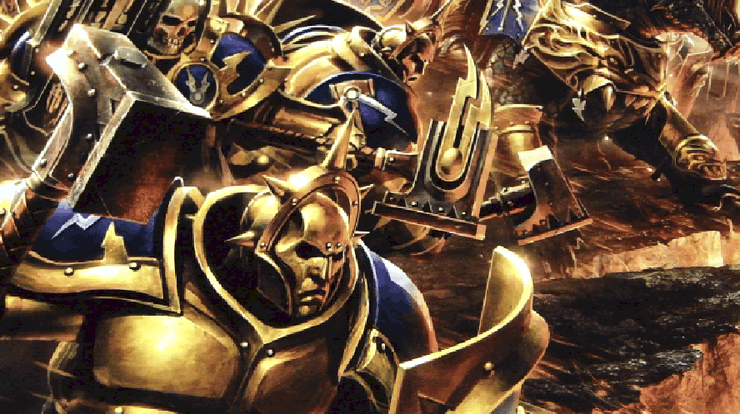Twenty Space marine legions were created by the Emperor for the Great Crusade, but just how BIG were they?
Source: Our Friends at Lexicanum
The First Founding was the twenty Space Marine Legions, that were originally created by the Emperor to take part in the Great Crusade. All the Space Marines of a Legion (“battle-brothers” amongst themselves) were modified with help of the DNA samples of a single Primarch. As a Primarch was found, he would receive the command of his respective Legion.
Organization
The Legio Astartes, being far larger then current Space Marine Chapters, were organized along drastically different lines. At the head of the Legion was its Primarch Commander who oversaw the Legion’s headquarters. Below this were the Chapters of the Legion, each of which was commanded by a Chapter Commander. Each Chapter in turn was divided into a number of Battalions, each of which was further divided into Companies. The Company, itself divided into a number of Squads, was the basic military division of the Legio Astartes. Due to the varying sizes of each Legion, there was no fixed number of how many Chapters, Battalions, Companies, and Squads a Legion would contain.
Number of Legionaries
The Legions were massive armies, and the size of each could vary tremendously. A precise number was never truly achieved and maintained. Even during the Great Crusade, some Legions were very numerous, while others were not. The numbers would always vary with new recruits and inevitable battle-losses, and also important was the availability of potential recruits and the administrative skills of the Primarch and his officers.
The most numerous Legion of all was the Ultramarines. The Thousand Sons of Magnus were of a small number as many of them had developed mutations or uncontrollable levels of psychic powers. Fulgrim‘s samples had been largely lost, and this left the Legion of the Emperor’s Children also with a very small number. Both of these Legions would increase their numbers to acceptable standards only after their Primarchs were found.
The approximate sizes of a few of the Legions at the start of the Heresy have been given in various sources:
- Ultramarines – 250,000
- Sons of Horus – Between 130,000 and 170,000
- Iron Warriors – 150,000 to 180,000
- World Eaters – 150,000
- Word Bearers – 100,000 to 150,000
- Blood Angels – 120,000
- Night Lords – 90,000 to 120,000
- Iron Hands – 113,000
- Emperor’s Children – 110,000
- Imperial Fists – 100,000
- Death Guard – 95,000[
- Alpha Legion – Conflicting accounts ranging from 90,000 to 180,000
- Salamanders – 89,000
- Raven Guard – 80,000
- Thousand Sons – 10,000
Notes
The Legion size issue is contentious, with several types of numbers mentioned in separate sources meant to reflect a general or nominally-sized legion. As well as numbers directly given in sources themselves, several authors have commented on the issue. Pressed with questions about pre-Heresy organisation – although declaring there is not any real information about it – Andy Chambers answered that “Space Marines started out in Legions of approximately 10,000 strong (or more, depending on the specific legion), which were broken down into Chapter-sized Great Companies rather like the Space Wolves (who are renowned for not adopting the Codex Astartes alterations made by Guilliman post-heresy and who thus follow pre-heresy organisation more closely”.
- Note 1: In The Crimson Fist (Novella) it is mentioned that 20,000 Imperial Fists constituted one-fifth of the entire Legion, making 100,000 the likely number.
- Note 2: In A Thousand Sons (Novel), during the Battle of Prospero it is mentioned that Ahriman counts about 1,000 survivors from the legion and states that it is “tenth of the Legion” which makes the Thousand Sons about 10,000 men before the Space Wolves attack Prospero.
- Before the Word Bearers invasion to Boros Gate it is mentioned the Black Legion’s strength is unparalleled and that their rank their ranks outnumbered the Word Bearers by almost ten to one. If at that point the Word Bearers kept the ranks at the size of 100,000 space marines it means the Black Legion have vastly increased their numbers to around 1,000,000 space marines.
- Note 3: Further down the page of the cited source, Betrayal states that this number is leading up to Istvaan III. After the conflict, some 60,000 Sons of Horus Astartes were lost, some of which are the Loyalists. After the betrayal at Istvaan III, the current numbers of the Sons of Horus are estimated to be 70,000-110,000.







